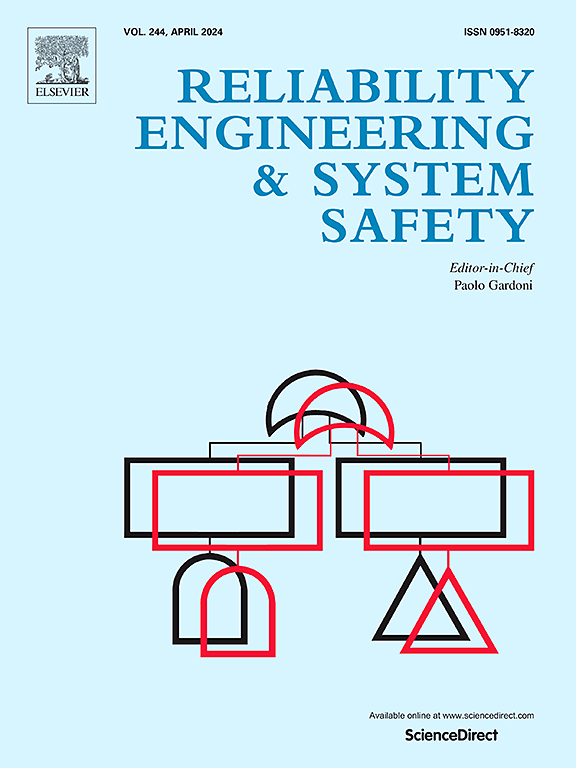时序不连通路径集可重构多级系统的基于图的可靠性评估
IF 9.4
1区 工程技术
Q1 ENGINEERING, INDUSTRIAL
引用次数: 0
摘要
可重构多阶段系统(reconfigurable multi-stage system, RMS)在现代工业中得到了广泛的应用,其可靠性具有重要的意义,因为任何一个组成阶段的故障都将导致系统的故障和整个任务的终止。在本文中,我们提出了一个基于生存签名的RMS可靠性框架。我们的方法将传统的概率估计问题转化为基于图的路径搜索问题,从而简化了繁琐的蒙特卡罗采样。为此,提出了一种非连通路径图法来计算RMS等效图模型的工作路径数。而不是直接枚举所有可能的工作路径,通过回溯搜索不连接的节点来确定感兴趣的路径,同时减少了计算成本。为了进一步解决具有共享组件的RMS的情况,提出了一种顺序无连通路径图(SUPG)方法。通过两个数值算例和一个应用实例验证了该方法的有效性。结果表明,该方法可以在系统重新配置后识别出“瓶颈”阶段,节省了计算成本。本文章由计算机程序翻译,如有差异,请以英文原文为准。
Graph-based reliability evaluation of a reconfigurable multi-stage system using sequential unconnected path sets
Admitting its potential in flexible manufacturing, the reconfigurable multi-stage system (RMS) is widely used in modern industries while its reliability is of great importance since the failure of any composing stage will lead to the system failure and abortion of the whole mission. In this paper, we present a survival signature-based framework for the reliability of an RMS. The idea of our approach is to convert a conventional probability estimation problem to a graph-based path-searching problem, thus the tedious Monte Carlo sampling is simplified. To this end, an unconnected path graph method is developed to calculate the number of working paths of the equivalent graph model of RMS. Instead of directly enumerating all possible working paths, those paths of interest are identified by searching unconnected nodes via backtracking while the computation cost is reduced. To further address the case of an RMS with shared components, a sequential unconnected path graph (SUPG) method is developed. The proposed method is validated through two numerical cases and an application example. The results show our method can identify the “bottleneck” stage once the system is reconfigured with saved computational cost.
求助全文
通过发布文献求助,成功后即可免费获取论文全文。
去求助
来源期刊

Reliability Engineering & System Safety
管理科学-工程:工业
CiteScore
15.20
自引率
39.50%
发文量
621
审稿时长
67 days
期刊介绍:
Elsevier publishes Reliability Engineering & System Safety in association with the European Safety and Reliability Association and the Safety Engineering and Risk Analysis Division. The international journal is devoted to developing and applying methods to enhance the safety and reliability of complex technological systems, like nuclear power plants, chemical plants, hazardous waste facilities, space systems, offshore and maritime systems, transportation systems, constructed infrastructure, and manufacturing plants. The journal normally publishes only articles that involve the analysis of substantive problems related to the reliability of complex systems or present techniques and/or theoretical results that have a discernable relationship to the solution of such problems. An important aim is to balance academic material and practical applications.
 求助内容:
求助内容: 应助结果提醒方式:
应助结果提醒方式:


